
24 years old She/Her
76 posts
Lovemelikewangxian - Debby - Tumblr Blog




You can pet the bunnies💕
Going fishing
Discussion Conference at Qishan
Illustrations and sketch by ChangYang




Some of Mo Dao Zu Shi novel illustrations by
Changyang



*From her previous now-deleted account
Follow her on: Weibo
Wei Wuxian by ChangYang (长阳)




*from her now deleted account - 九条轮
Follow her on : Weibo
Random Stuff #12: What is Simplified Chinese?
For people like me who grew up speaking and using Chinese in day to day life, the vast majority of us have at least a basic understanding of what Simplified Chinese is, but it wasn’t until some days ago when an English speaker asked me “what is Simplified Chinese?” that I realized not many people here understand what Simplified Chinese is. So, I’ve gathered some misconceptions I’ve encountered both in real life and online, and I will try to answer them in a concise but factual manner.
But first, let us talk basics. There are three things we must cover first before going into this topic. The first is the fact that both Simplified Chinese (简体中文) and Traditional Chinese (繁體中文) used today are modern standardized systems of written Chinese, as in both were compiled within the past 100 years or so (modern Simplified from 1935-1936, then again from 1956 and on; modern Traditional starting from 1973), and the two currently widely used versions of both systems were officially standardized in the past 50 years (modern Simplified current version standardized in 2013; modern Traditional current version standardized in 1982). However, since simplified characters already exist in history (called 简化字/簡化字 or 俗体字/俗體字/”informal characters”), and “Traditional Chinese” can be taken to mean “written Chinese used in history”, in this post I will use “modern Simplified/Traditional Chinese” or “modern Simplified/Traditional” when referring to the currently used modern standardized systems.
Second is the evolution of written Chinese. Usually when this is taught, instructors use examples of how certain characters evolved over time, for example one might encounter a linear diagram like this in Chinese class:

(Original picture from Mandarinpedia)
However, this diagram only gives a very general idea of how characters evolved from more picture-like logograms to the more abstract symbols we call characters today, and does not reflect the complexity of this evolution at all. To get into these details we will need to talk about Chinese calligraphy. In terms of the evolution of written Chinese, Chinese calligraphy–all those scripts like oracle bone script (甲骨文), bronze/Jinwen script (金文), Seal/Zhuan script (篆书/篆書), Clerical/Li script (隶书/隸書), Regular/Kai script (楷书/楷書), etc–they aren’t just calligraphy fonts, but actually change the way characters are written, and are representative of the commonly used forms of written Chinese at different points in Chinese history, as in the appearance of a certain script on a historical artifact can actually be used to estimate how old the artifact is. Below is a (very) rough timeline of when each script appeared and when they are most popular:
Oracle bone script/Jiaguwen (甲骨文): Shang dynasty (~1600 BC-1046 BC)
Bronze/Jinwen script (金文; includes Large Seal script/大篆): Western Zhou dynasty (~1046 BC-771 BC)
Seal/Zhuan script (篆书/篆書; sometimes called Small Seal script/小篆 or Qin script/秦篆): compiled in Qin dynasty by chancellor Li Si/李斯 around 221 BC, was the official script in Qin dynasty (221 BC-207 AD); popularity went down after Qin dynasty but was still in use for ceremonial purposes like official seals (the archaic meaning of 篆 is “official seal”, hence the English name); still in use today in very specific areas like seal stamps, calligraphy, logos, and art.
Clerical/Li script (隶书/隸書): appeared in Qin dynasty, became the main script used in Han dynasty (202 BC-220 AD); popularity went down after Han dynasty but was still in use; still in use today in specific areas like calligraphy, inscriptions/signatures on traditional Chinese paintings, logos, and other art.
Regular/Kai script (楷书/楷書): appeared in late Han dynasty, became the main script used in Tang dynasty and has been popular ever since (618 AD-present).
(Note: there are other calligraphy scripts like Semi-Cursive script/行书/行書 and Cursive script/草书/草書 that were never mainstream yet were also significant, especially in the case of modern Simplified Chinese, but I will mention them later so this won’t become too confusing)
So if we plug the information from the very rough timeline above into the linear diagram, it becomes this:

But wait! There’s even more! Because there is a thing called variant Chinese characters/异体字/異體字, which basically means that there have been multiple ways in which a character can be written (“one character, many forms”/一字多形), and these can come about as a result of homophones, personal preference of historically significant people, historical trends, mistakes in the past that stuck around, or the result of stylized scripts like Cursive script/草书/草書, which simplifies and connects strokes in a liberal manner. The reason Cursive script is important here is because of the logographic nature of written Chinese, meaning the simplifying or connecting of strokes actually changes how the character is written. Because of this, 马 and 馬 were forms that have already existed before modern Simplified and modern Traditional were compiled. A diagram that takes variations and evolution into account should look something like this:

And since the above diagram did not take Cursive script into account, here’s another picture of a myriad of scripts/fonts (not in chronological order) that includes 馬 in Cursive script (mostly on bottom left):

Now you may have an idea of where modern Simplified and Traditional Chinese came from: they are both compiled from existing variants. Since both modern Simplified and modern Traditional are supposed to be standardizations of written Chinese, they each set a single variant for each character as the “standard”. Modern Traditional Chinese kept the more historically mainstream 馬, and modern Simplified Chinese substituted it with the simpler variant 马. Taking all of this into account but still keeping it concise for our topic here, our linear diagram from the beginning should be modified to look like this:

And that’s just an example of a single character. This evolution diagram can differ depending on the character too, due to there being other rules for simplifying characters. This is why standardizing written Chinese is an immense amount of work, but once standardized, the written language will be streamlined and much easier to use in communication.
Finally, we are ready to clear some misconceptions.
—————————————————
About Common Misconceptions Regarding Modern Simplified Chinese:
“Simplified Chinese replaced all Traditional Chinese characters”. Untrue. Modern Simplified Chinese only standardized 2274 of the most used Chinese characters and 14 radicals with simpler variants. That’s really all there is to it. For reference there are a total of about 60,000 Chinese characters, and about 3,500 of these are deemed to be often-used characters; so only ~3.7% of all Chinese characters and ~65% of often-used Chinese characters are simplified in modern Simplified Chinese. Play around with any online tool that can switch between modern Simplified and modern Traditional, and you will find that many characters stayed the same.
“Simplified Chinese is the opposite of Traditional Chinese”. Untrue. Modern Simplified Chinese is just a simplified and standardized system of written Chinese. Modern Simplified Chinese and modern Traditional Chinese are not “opposites” of each other at all, just different standardized systems serving different purposes. Modern Simplified was compiled with ease of use in mind, since Traditional characters can be time-consuming to write, for example imagine writing 聲 (sound) when you can just write 声 instead. Also back when Simplified was being introduced to the public, a huge part of the population was illiterate, especially farmers, poor people, and women, so Simplified Chinese was a great way to quickly educate them on reading and writing, and to improve efficiency in all aspects of life. Knowing how to read and write is key to education, and education is a must if people’s lives were to be improved at all.
“Simplified Chinese is Mandarin”. Untrue. Mandarin is a spoken dialect that came from Beijing dialect, and both modern Simplified and modern Traditional Chinese are modern standardized systems of written Chinese. One concerns the written language and the other concerns a spoken dialect.
“Simplified Chinese was invented by the Communist Party”. Untrue. As mentioned before, most characters used in modern Simplified Chinese are already present in ancient texts, artifacts, and inscriptions as variants. Apparently the only character simplified by PRC was 簾 (blinds/curtain), which became 帘 in modern Simplified Chinese. History wise, Republic of China was the first to start compiling Simplified Chinese in 1935 and introducing it to the public, but this was called off after 4 months. PRC modified and built on the original plan, and introduced it to the public again starting from 1956.
“Simplified Chinese is to Traditional Chinese as Newspeak is to English in 1984”. Completely untrue. Modern Simplified Chinese is just a simplified way to write commonly used Chinese characters and does not alter the meaning of the characters. There are some Traditional characters that are combined as one simplified character in modern Simplified, but the meanings are not lost or altered. For example, 發 fā (development) and 髪 fà (hair) are combined as 发 in modern Simplified, resulting in 发 having 2 different pronunciations (both fā and fà), and each of these pronunciations carrying their original meaning. The meaning of neither 發 nor 髪 was lost, 发 will just have a longer dictionary entry.
“Simplified Chinese is a huge change from Traditional Chinese”. Only partly true in that it is a change, but it is a change justified by the evolution of written Chinese throughout history. The origin of most modern Simplified Chinese characters come straight from history itself, since many characters had alternative ways in which they were written (sometimes for convenience), for example these characters below. Each row contains different forms of a single character (smaller characters indicate what time period these variants are from; ex: 汉碑 means the variant is from a Han dynasty inscription).

In reality, written Chinese has always been standardizing itself. Less-used variants become forgotten over time, sometimes only rediscovered through archaeology. Besides, effective written communication does partly rely on standardization of the written language (imagine everyone writing in the various variants…how horrible would that be?). Modern Simplified just took this one step farther and made some characters easier to write.
“Traditional Chinese is no longer used in Mainland China”. Untrue. Modern Simplified is the commonly used form in Mainland China, but Traditional is still used in a variety of places, such as on store signs/brand logos, particularly for stores/brand that are old. For example the old Beijing brand 天福号 below (est. 1738). On their logo, 天福号 is written as 天福號 from right to left, which is the traditional way of writing horizontally.

Traditional Chinese is also used in the logos for many universities in China:

Another way in which Traditional Chinese is commonly used in mainland China are personal seal stamps. Often times when people carve seal stamps for personal use (for example showing ownership on artwork they created or collected), they would put their name/courtesy name/nickname on the seal stamps in Zhuan/篆 calligraphy font, and Zhuan font use Traditional Chinese. Of course, the ways in which Traditional Chinese is still used in mainland China isn’t restricted to these two examples here. There are other places where Traditional Chinese is still used, such as traditional paintings/国画, calligraphy/书法, and many many more.
“People who grew up reading Simplified Chinese cannot read Traditional Chinese”. Depends on who you are asking. I grew up learning only modern Simplified, and I can read Traditional/modern Traditional Chinese just fine without having to actually learn it from anyone. Most people who grew up with Simplified Chinese should be able to read at least some Traditional without help. There are some people who say they can’t read Traditional without taking the time to learn it, but I doubt they’ve really tried, to be very honest.
—————————————————
And that’s it for the misconceptions!
My personal philosophy regarding modern Simplified Chinese and modern Traditional Chinese can be summed up as 识繁写简, or basically “know how to read Traditional and know how to write Simplified”. In a way, knowing how to read Traditional is a bit like knowing how to read cursive: a lot of history could be lost if we completely stopped using/learning about Traditional Chinese, but to meet the fast pace that modern life demands, I think modern Simplified Chinese is the more convenient choice for writing for day-to-day purposes. Since quite a few posts on this blog concern history, you will find that I usually use both Traditional Chinese and Simplified Chinese for historical things, since modern Traditional Chinese is closest to what people used in the past, and modern Simplified Chinese is more often used now. If it appears that I didn’t put modern Simplified and modern Traditional side by side, that usually means either the characters stayed the same and there’s no need for me to type the same thing out again, or the topic does not call for both to be shown.
Finally, the fun part. Here’s a Seal/Zhuan script calligraphy work by Mi Fu/米芾 (1051-1107):

Does something look familiar there?


【The New Epilogue of TGCF Novel】Hand-writing letter to readers
Translated by CRT.

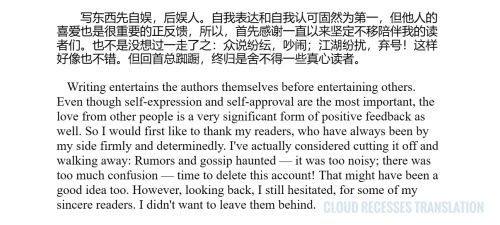
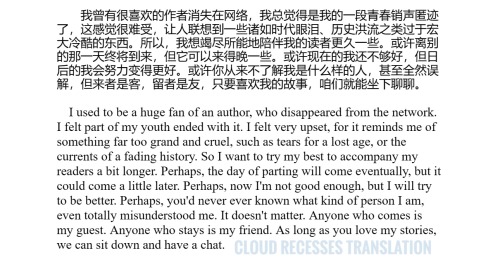
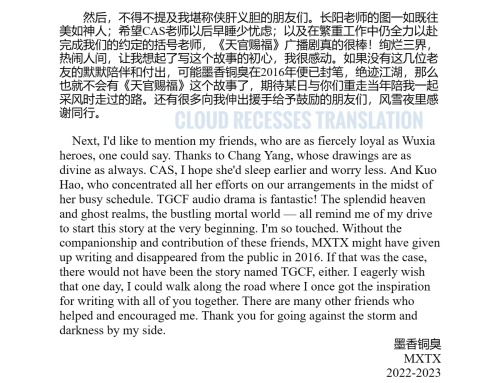
【The New Epilogue of TGCF Novel】Personal ranking of the degree of revision & the new novel
Translated by CRT.
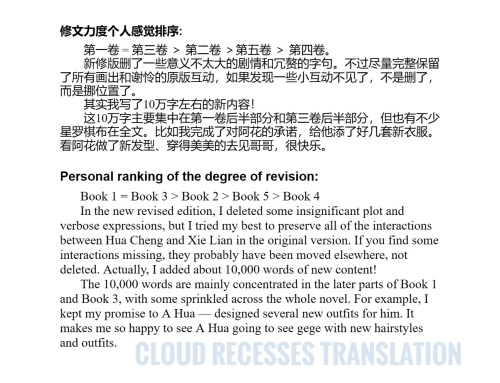


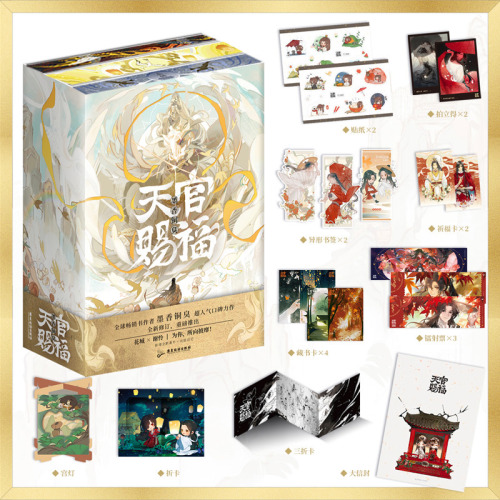
Me going trough the mdzs tag on tumblr.
tumblr needs a “not for you” page where it just has things that you disagree with and make you angry
What do you think about the whole guidao vs modao argument?
What's the argument about? They're both talking about the same thing, modao sounds flashier and more badass, that's why it's in the title of the novel. If they mean modao sounds bad because mo = demonic, well that's just how the establishment refer to things that are outside of their circle and their accepted norms. Is core melting technique cruel and bad? yes. Did the establishment call it modao? No. Because the Wens were not only part of their clique, they're the ones who're running the show.
Honestly idk why people get stressed about the "demonic" prefix, in the Jin Yong wuxia tradition (and many many wuxia that came after him), "mojiao", demonic sect, are often one of the good guys. Zhang Wuji (cinnamon roll MC from Haven Sword and Dragon Sabre ), is the leader of the Ming Sect, the demonic sect in the story. Linghu Chong (Xiao Ao Jiang Hu) married the heiress to the demonic sect in the story. If a female character is described as 魔女 or 妖女, she's probably gonna end up with the MC.
If you want to see the establishment sects get humiliated in a wuxia story, I highly recommend Haven Sword and Dragon Sabre.
I think my favourite thing about tumblr mutuals is how it lets me really lean in to loving people in the simplest of ways
And by that I mean - I don't really know my mutuals extremely well, for the most part. I know pieces of them - maybe a name, maybe about their pets, or what area of the world they live in, or what fandoms they like, or little things they love about the world. Maybe about their sorrows, too. But little things. Things that feel ok to share on an open platform.
But they're still my beloved mutuals. And I still love them. So I get to leave nice little messages, or tell them that I love what they're writing, or send condolences in their replies when something hard happens. I can try and make this person who I don't really know that well smile, or feel a little bit loved, so why wouldn't I try?
And my mutuals do the same for me! I get tagged in posts, or people send me asks for an ask meme, or like the silly things I post. Little bits of love sent my way all the time.
I dunno. I just love that this platform lets us try and make people's day just a little bit brighter, simply by knowing that someone out there, halfway across the world, is smiling at you and wishing you well and sending you love through frog pictures or fandom gifs. Thats all.

I thought I would have to wait for a while but surprisingly my special edition of mdzs came today. I like most of the things coming with the special edition tbh.








xihu/west lake, hangzhou by 飘摇zz16
what do you think about this? https://twitter.com/doufudanshi/status/1594369341880950784?s=46&t=FuQhtzTBJ50lKoEOm9lBBg never knew that’s a curse word…
it just means bugger off. It's a extremely common expression people use. You don't say "go away" to your mother or elders, it's not a curse word, but it's not polite to say that to your senior. But among peers, this is just an average expression....
The other day I saw a discourse about if "meowy" is an accurate translation in the chainsaw man fandom. I'm just...it's just a fucking name for a cat. people who waste their time on stupid shits like a single expression in a series not written in english, like why?
lol, don’t know if you’ve seen this on Twitter yet but now all the LXC haters are saying that he was a “major reason why WWX died”
why cant people just not like a character. Why do they have to make up random shit that isn’t even TRUE!?!?
LOL Lan Xichen haters will always be the most miserable bc Lan Wangji didn’t cut his brother & Lan Qiren out of his life.
Imagine WWX being the kind of person who would resent LWJ his family ? Meaning imagine WWX just being a totally different character than the one he is. Most of these ppl are projecting on WWX though and are salty LWJ has anyone he values at all outside of him. It’s so cringe & unhealthy and the opposite of what their canon relationship is…
ramadan mubarak to all those who are observing. may this holy month sooth all of the aches lingering in your heart, wash away whatever burdens that may be weighing you down, reward you for all of the sacrifices that you have had to make in order to survive, shine light through whatever darkness that has made you doubt your place in this world, and grant you the inner peace, genuine happiness, and relief that you have been praying so patiently for.
if you’re ever jaded by really bad fanon interpretations it helps to revisit the source material so you can go Oh thank god. t’was all just a bad dream
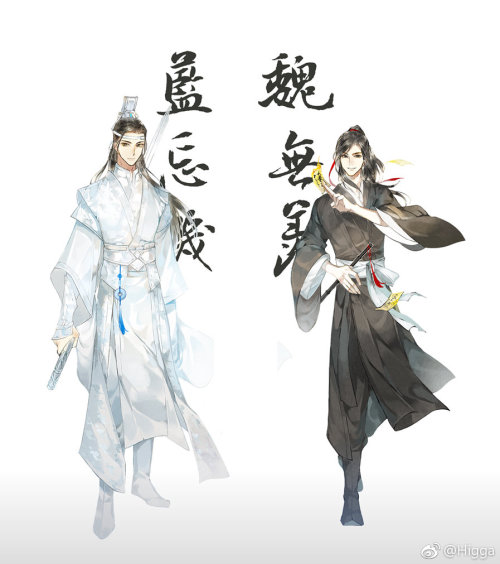
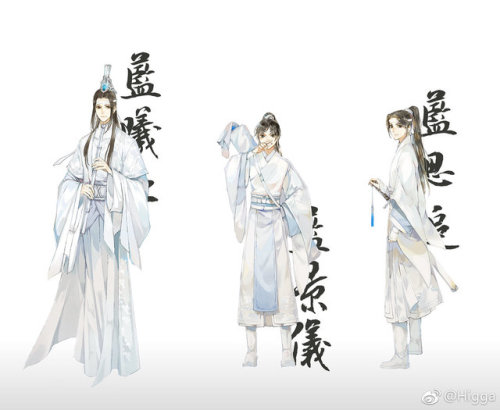
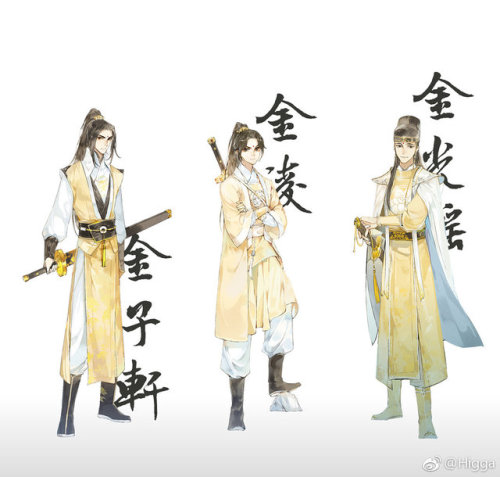
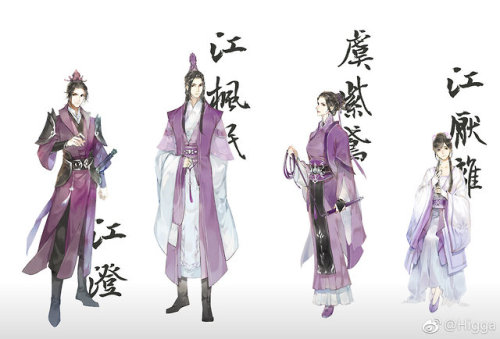
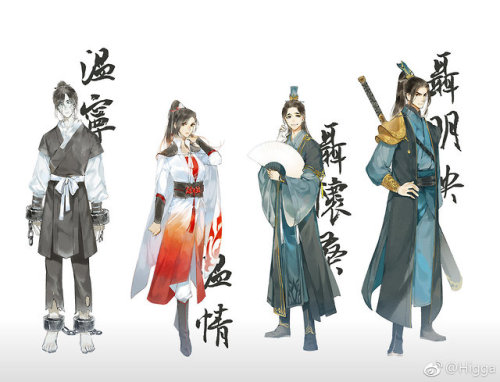
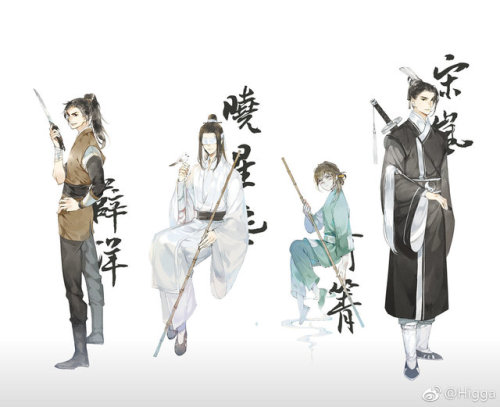
Art by Higga for Mo Dao Zu Shi
↳ Do not repost without credit or remove the watermark
I will never get over the perfection that is wangxian in Chanyang arts. They look like immortal angels who descended from heaven 🛐🛐🛐🛐🛐🛐🛐🛐



The way wangxian take care of each other it's all about the little things.
For example, when Lan Wangji had that meal in Yiling with Wei Wuxian and A-Yuan, all he ordered were spicy dishes so Wei Wuxian could eat more. He wasn't expecting wwx to notice or to thank him, he just wanted him to eat the things he loves the most. Wei Wuxian didn't even notice it until years later!
Or the way Wei Wuxian is always trying to keep Lan Wangji clean at all costs. Even when Lan Wangji was drunk, his way of "teasing" him and "taking advantage of the situation" was removing his boots, laying him down on the bed and washing his face. Just, taking care of him. Even though Lan Wangji wouldn't remember anyhting the next morning.
I love that they just do these things that might go unnoticed without expecting anything in return. And the novel is full of them.
We know that wangxian are very capable of doing grand gestures to show their love for each other, but it's these little gestures that really get to me. They don't expect the other person to reciprocate or even notice what they have done, they just want to see the person they love happy and comfortable.
I don't know but I feel it's such a sweet and selfless way of showing love... and honestly, it suits them so much.







Changyang’s beautiful rendition of the Wangxian Confession Scene
Wei WuXian put three fingers together, pointing at the sky, the earth, and finally his heart, “And I want to sleep with you every day. I swear it‟s not the heat of the moment or joking around like I‟ve done in the past. I‟m not doing it out of gratitude either. Anyways, it‟s not because of anything else. I really just like you so much I want to sleep with you. I don‟t want anyone but you—it can‟t be anyone but you. You can do anything you want to me, however you like it. I‟ll accept everything, as long as you‟re willing to...”
hi! in MDZS volume 2, i found that 7S had translated that iconic passage at the end of chapter 50 as
‘But he really hadn't expected it to turn out like this. When everyone was praising him out of fear, Lan Wangji rebuked him to his face. When everyone spat and hated on him, Lan Wangji stood by his side.’
this is a little different to how exr translated it,
‘But what he hadn’t expected was that when everyone feared him and flattered him, Lan WangJi scolded him right in his face; when everyone spurned him and loathed him, Lan WangJi stood by his side.’
in context, exr’s makes the most sense to me as we saw people genuinely and openly praising wwx during the SSC earlier in the book (ch.48) !
which is more accurate to the original phrasing, in your opinion?
Hi sorry for not getting to this sooner! Here's the passage in question:
可没想到的是,当所有人都畏惧他奉承他的时候,蓝忘机当面痛斥他。而当所有人都唾弃他痛恨他的时候,蓝忘机却站在了他身边。
It's written in a parallel way "fear him/flatter him", so they are making two separate points rather than one causing the other. That said, the 7S translation isn't too wrong since the overall meaning was "back when WWX was a big deal and everyone was intimidated and wanted to be in his favor". But yeah, the exr translation is more accurate.
